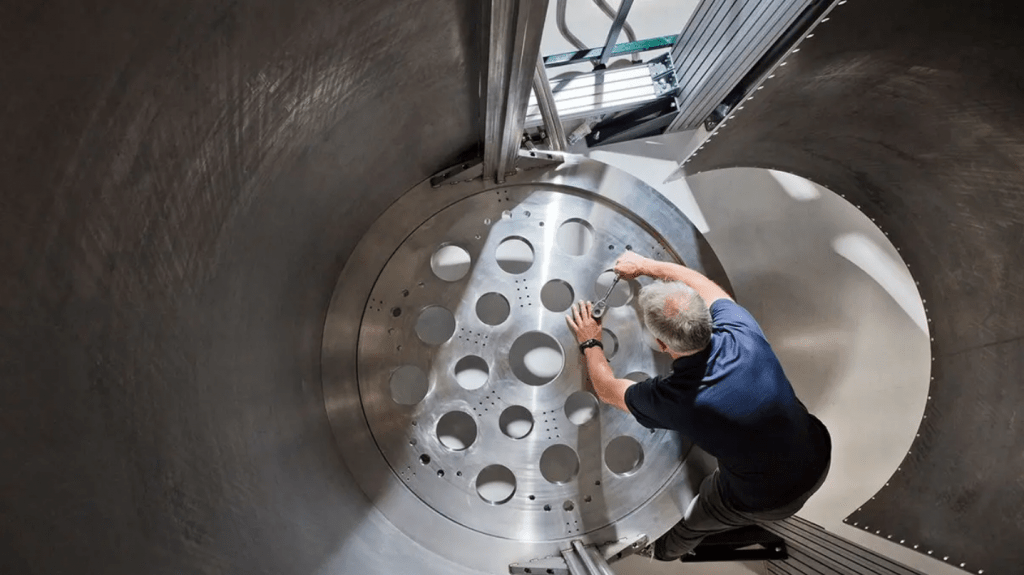IBM this week announced it had reached the culmination of the mission of Project Goldeneye, the company’s proof-of-concept effort, first announced in 2020, to build a new, ultra-cold dilution refrigerator to house future quantum processors.
“We successfully cooled it to operating temperature (~25 mK) and wired a quantum processor inside,” stated IBMers Jerry Chow and Pat Gumann in a blog post. “Goldeneye will soon move to our IBM Quantum Computation Center in Poughkeepsie, NY, where the team will be exploring large scale cryogenic systems to best develop the cooling needs of tomorrow’s quantum data centers, such as the Bluefors Kide platform under development for use with IBM Quantum System Two.”
Chow, who is an IBM Fellow and Director of Quantum Infrastructure, and Gumann, Manager of Quantum Processor and System Integration at IBM, added, “We hope that its innovative design, with an eye toward ease-of-use, will inspire the next generation of vacuum and low temperature refrigeration technologies.”
IBM also measured frequencies and coherence times for a qubit chip placed in the Goldeneye unit, and was able to reproduce coherence times of around 450 microseconds, similar to those measured on other commercial dilution refrigeration systems.
IBM announced the Bluefors partnership and its work with the Kide platform in November of last year, and the blog post this week stated that while the modularity of Kide allows it to serve IBM quantum systems through 2025, Goldeneye could help influence how IBM constructs quantum systems in the years beyond the time frame.
Chow and Gumann further stated, “Project Goldeneye features an all-new construction of the frame and cryostat — the main, barrel-shaped component responsible for the cooling — to maximize experimental volume while reducing noise and achieving the temperatures required for cooling experimental quantum hardware. The design is modular, which made prototyping, assembly, and disassembly a much easier lift for just a team of four IBM engineers. Other large dilution refrigerators may require larger cranes and a dozen or more technicians for assembly and disassembly.”
They also said that while dilution coolers often require a team of operators to function properly, Goldeneye includes automated capabilities, such as an automated jib crane, that could one day allow even a single person to run the fridge. IBM also expects that it will be able to be monitored remotely with the help of an open-source visualization platform.
Dan O’Shea has covered telecommunications and related topics including semiconductors, sensors, retail systems, digital payments and quantum computing/technology for over 25 years.
